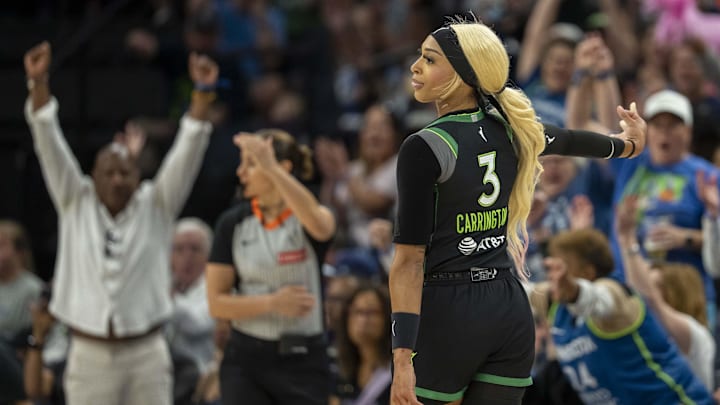The Minnesota Lynx have a well-rounded roster, but even the best teams have weaknesses. For Minnesota, it’s a lack of size. In the frontcourt, Alanna Smith’s and Napheesa Collier’s versatility on both ends of the court helps compensate for some of the Lynx’s lack of size. Trading for DiJonai Carrington during the season added some size, strength, and defensive talent to the backcourt.
Carrington played eleven regular-season games and two playoff games for the Lynx before suffering a foot sprain that will keep her out for the rest of the playoffs. Losing Carrington doesn’t only hurt the Lynx’s depth, it also highlights a rare roster flaw the Phoenix Mercury could exploit: The Lynx’s lack of size on the perimeter. The Mercury may not have the same size advantage in the frontcourt other teams have, but they can still pick on the smaller Lynx guards.
Carrington may not be the biggest guard out there, but she offers more size than Courtney Williams and Natisha Hiedeman.
The Lynx have a size disadvantage
The Lynx got the 82-69 win over the Mercury in Game 1 behind strong play from Courtney Williams, Napheesa Collier, and Kayla McBride, and an impressive eight-minute stint from Maria Kliundikova. Nevertheless, this bodes to be a long series. Phoenix has the star power and talent to challenge the Lynx. They also have the tools to exploit the Lynx’s lack of size on the perimeter. The shortest player in the Mercury’s rotation in Game 1 was Sami Whitcomb, who still has a size advantage over Williams and Hiedeman.
Alyssa Thomas is one of the best passing bigs to ever play the game. She is also one of the most versatile and physical players in the league. That makes her one of the most difficult players to guard, especially when she can get into a pick-and-roll situation with a smaller guard. Bridget Carleton and Kayla McBride may be able to hold their own in those situations, but Hiedeman and Williams have a bit of a target on their backs. This is not because they are bad defenders. It’s simply a matter of targeting any weakness the Lynx have. There aren’t too many after all.
With Carrington out, the Lynx don’t have another option. The only other guard on the bench is Jaylyn Sherrod, who gives up even more size than Williams and Hiedeman.
Williams and Hiedeman can make up for their lack of size on defense with their offensive contributions, though. Williams led the Lynx in points and assists and was the team’s offensive engine in the Game 1 win. Hiedeman didn’t have the best offensive game, but is capable of much more. She scored at least 20 points in four of her last five games before the playoffs. She also dropped 18 points in the Lynx’s playoff opener.
